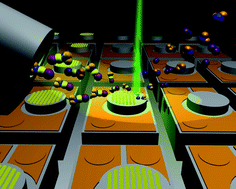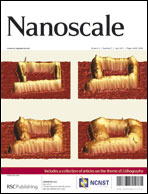Local electron triggered reactions of functional surface adsorbates were used as a maskless, dry, and minimally invasive nanolithography concept to stabilize the polarisation of individual vertical cavity surface emitting lasers (VCSELs) on a wafer in a post-processing step. Using a 30 keV focused electron beam of a scanning electron microscope and injecting volatile organo-metallic (CH3)2Au(tfa) molecules, polarisation gratings were directly written on VCSELs by dissociating the surface adsorbed molecules. The electron triggered adsorbate dissociation resulted in electrically conductive Au-C nano-composite material, with gold nanocrystals embedded in a carbonaceous matrix. A resistivity of 2500 µΩcm was measured at a typical composition of 30 at.% Au. This material proved successful in suppressing polarisation switching when deposited as line gratings with a width of 200 nm, a thickness of 50 nm, and a pitch of 500 nm and 1µm. Refractive index measurements suggest that the optical attenuation by the deposited Au-C material is much lower than by pure Au thus giving a low emission power penalty while keeping the polarisation stable.

You have access to this article
 Please wait while we load your content...
Something went wrong. Try again?
Please wait while we load your content...
Something went wrong. Try again?


 Please wait while we load your content...
Please wait while we load your content...